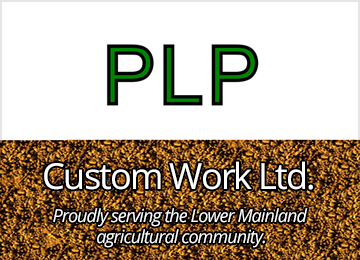words: Ronda Payne
Native to the Andes Mountains of South America, in the 80s and 90s, alpacas began to make their way to Canada due to their soft, cashmere-like coat; ease of rearing; and excellent temperament. It was the shearing and selling of the animals’ soft fibre that originally turned alpacas into a business-generating livestock, but many producers are finding that the sale of alpaca meat is a necessary part of their business.
Most Canadian alpaca farms are located in B.C., Alberta and Ontario and although somewhat outdated, statistics from the Canadian Llama and Alpaca Association note there were approximately 18,300 alpacas registered in Canada in 2006.
While these domesticated animals haven’t yet gone mainstream, owners of a Langley, B.C. farm have found that alpacas make an excellent choice for alternative livestock and hope the industry makes headway in the future.
Catherine Simpson and her husband Jim Doyle own Kensington Prairie Farm in Langley. Founded in 2006. It is the largest alpaca farm in the Lower Mainland and the couple breeds and shows their Huacaya alpacas (the most common variety) while also selling a variety of products including fibre-based items and frozen meat through their on-site store as well as online.
“The industry isn’t all that great right now,” she said honestly. “The demand isn’t there. We’re not there in Canada yet.”
Simpson points to other countries like Peru, Australia and the U.S. for their industry models with the hopes that Canada is soon to follow. She treats the alpacas like any other livestock and cautions that the animals are not pets. Because Kensington Prairie also has cattle, Simpson is well versed in the day-to-day needs of livestock and the importance of culling alpacas for the best stock.
“I am the only one in Canada culling the animals,” she noted.
For Simpson and Doyle, the sale of alpaca goods has come with a learning curve. The most significant has been with the meat.
“People don’t know how to cook the meat,” Simpson said. “It’s like cooking elk and venison, there is no fat.”
She added that the meat is also fairly expensive given that there is only approximately 70 pounds of meat per animal. Because of the challenges, Simpson has gone from slaughtering the animals at 18 months old to three years old. This allows for three years of fleecing prior to meat production.
“We shear once a year in April,” commented Simpson. “All our fleece goes out to be made into yarn, then comes back here for sale.”
There are six grades of fleece from alpacas ranging from the softest, cashmere-like fibres, to thicker, coarser fibres. It is a warm and thin; ideal for socks and shirts because of the ability to hold heat even when wet.
Some of Simpson’s yarn is turned into wearable products like socks, shirts and hats by local knitters. While there are 23 colours of alpaca fibres, Simpson, with her heard of 62, only sorts into about a dozen colours.
Alpacas are a relatively low-maintenance animal. They don’t require much acreage (about 1/8 of an acre per animal), eat a small amount for their size and are happiest with one or more other alpacas as they are quite social.
For farmers prepared to take on both fibre and meat production, alpacas can be a viable, and hopefully, growing option.
Alpaca Facts:
-
Pregnancy lasts about 11.5 months
-
Natural life span is about 15 to 25 years
-
Height is approximately 36″ to the shoulder
-
Average weight ranges between 100 & 200 pounds












